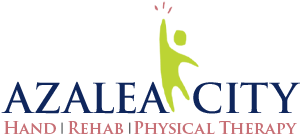Ankle Injuries Helped By Mobile AL Physical Therapy/Occupational Therapy

Ankle injuries in Mobile AL are some of the most common injuries people face, whether you're an athlete, a weekend warrior, or just someone navigating daily life. The ankle is a complex joint, and when it gets injured, it can lead to pain, instability, and difficulty walking. But here's the good news: with the right care-especially through physical therapy/occupational therapy-you can recover quickly, regain strength, and get back to your routine. In this guide, we'll dive deep into what ankle injuries are, the different types, their causes, how they're diagnosed, and how physical therapy/occupational therapy can make all the difference in your recovery.
What Is an Ankle Injury in Mobile AL?
An ankle injury occurs when there's damage to any of the structures that support the ankle joint, including bones, ligaments, tendons, and muscles. The ankle joint connects your leg to your foot and supports your entire body weight when you stand, walk, or run. Because of the ankle's mobility and the load it bears, it's susceptible to a range of injuries, from mild sprains to more severe fractures.
When the ankle is injured, it can lead to pain, swelling, bruising, and difficulty bearing weight. Ankle injuries can happen suddenly (acute injury) or develop over time due to repetitive stress (chronic injury).
Types of Ankle Injuries in Mobile AL
There are several different types of ankle injuries, each affecting different parts of the joint. Here's a closer look at the most common ankle injuries:
- Ankle Sprains
An ankle sprain is the most common type of ankle injury. It occurs when the ligaments that connect the bones in your ankle are stretched or torn. Sprains range in severity:- Grade 1 (Mild Sprain): Ligaments are stretched but not torn.
- Grade 2 (Moderate Sprain): Partial tear of the ligament, leading to instability and swelling.
- Grade 3 (Severe Sprain): Complete tear of the ligament, causing significant pain, swelling, and instability.
- Ankle Fractures
An ankle fracture happens when one or more of the bones that make up the ankle joint break. Depending on the location and severity of the fracture, it can lead to severe pain, inability to bear weight, and even deformity. Fractures often require immediate medical attention and immobilization. - Tendon Injuries
Tendons in the ankle can become strained, inflamed, or even torn due to overuse or acute injury. Tendonitis, particularly of the Achilles tendon, is common in athletes and runners. A ruptured Achilles tendon, however, is a more serious injury that often requires surgery and extensive rehabilitation. - Ankle Dislocations
While less common, an ankle dislocation occurs when the bones of the ankle joint are forced out of their normal position. This is usually caused by trauma and requires urgent medical care. - Chronic Ankle Instability
This occurs when an individual has repeated ankle sprains, causing long-term instability in the joint. Those with chronic instability often feel as though their ankle is "giving out" and may experience persistent pain and swelling.
What Causes Ankle Injuries?
Ankle injuries can be caused by a variety of factors, and understanding these causes is crucial for prevention and treatment. Here are the most common causes of ankle injuries:
- Sudden Twisting or Rolling
The most common cause of an ankle injury is a sudden twist, roll, or awkward movement that causes the ligaments in the ankle to overstretch or tear. This often happens during sports, but it can also occur during everyday activities like walking on uneven surfaces or missing a step. - High-Impact Activities
Athletes and active individuals who participate in high-impact sports, such as basketball, soccer, running, or gymnastics, are at a higher risk for ankle injuries. The quick changes in direction, jumping, and physical contact in these sports put a lot of stress on the ankle joint. - Poor Footwear
Wearing shoes that don't provide enough support, or wearing heels that throw off your balance, can increase your risk of spraining or twisting your ankle. Inadequate footwear can lead to ankle instability and make you more prone to injuries. - Weak Muscles and Ligaments
When the muscles surrounding the ankle are weak, they're less capable of supporting the joint during movement. This can make you more susceptible to rolling or twisting your ankle, leading to injury. - Repetitive Stress
Activities that involve repetitive movements, such as running or jumping, can place continuous strain on the ankle joint. Over time, this can lead to inflammation, tendonitis, or stress fractures.
How Are Ankle Injuries Diagnosed?
If you think you've injured your ankle, it's important to get a proper diagnosis to determine the severity of the injury and develop a treatment plan. Here's what you can expect during a diagnosis:
1. Physical Examination
A healthcare provider or physical therapist will begin by assessing your ankle, looking for signs of swelling, bruising, deformity, and tenderness. They'll also ask about your symptoms and how the injury occurred. During this exam, you may be asked to move your ankle or bear weight to test its mobility and stability.
2. Imaging Tests
To confirm the diagnosis and assess the severity of the injury, your provider may order imaging tests such as:
- X-rays: These are often used to rule out fractures.
- MRI or CT Scans: These provide detailed images of soft tissue damage, such as ligament tears or tendon injuries.
3. Range of Motion and Strength Tests
Your physical therapist will conduct specific tests to determine how much range of motion and strength you've lost in your ankle. This helps create a tailored rehabilitation plan.
How Physical Therapy/Occupational Therapy Helps People with Ankle Injuries
Physical therapy/occupational therapy is one of the most effective treatments for ankle injuries, focusing on reducing pain, restoring mobility, and strengthening the joint to prevent future injuries. Here's how physical therapy/occupational therapy can help you recover from an ankle injury:
1. Pain Management
The first goal of physical therapy/occupational therapy is to manage pain and reduce inflammation. Your physical therapist may use various techniques to alleviate your discomfort, including:
- Cold Therapy: Applying ice packs can reduce swelling and numb the pain.
- Manual Therapy: Hands-on techniques such as massage and joint mobilization can help relieve tension, reduce stiffness, and improve blood flow to promote healing.
- Ultrasound or Electrical Stimulation: These modalities may be used to reduce pain and improve circulation to the injured area.
2. Restoring Range of Motion and Flexibility
After an ankle injury, it's common to experience stiffness and limited mobility in the joint. Physical therapy/occupational therapy focuses on restoring your range of motion through targeted exercises:
- Gentle Stretching: Your therapist will guide you through stretches that improve flexibility in the ankle and surrounding muscles.
- Range of Motion Exercises: Specific exercises will help regain full movement in the ankle, ensuring that the joint heals without stiffness.
3. Strengthening the Ankle
Strengthening the muscles around your ankle is critical to stabilizing the joint and preventing future injuries. Your physical therapist will design a customized exercise program that gradually builds strength:
- Resistance Training: Using resistance bands, weights, or body weight exercises, your therapist will help you target key muscle groups that support the ankle.
- Balance and Stability Exercises: Balance training helps improve proprioception (your sense of body position) and stability, which is crucial for preventing future ankle sprains.
4. Preventing Future Injuries
Physical therapy/occupational therapy doesn't just focus on recovery-it also helps prevent future ankle injuries. Your therapist will teach you proper movement patterns, recommend ergonomic adjustments, and provide tips on footwear that supports your ankle. You'll also receive a personalized home exercise program to continue strengthening your ankle after therapy ends.
What Should You Do If You Think You Have an Ankle Injury?
If you've twisted your ankle or are experiencing pain, swelling, or instability, here's what you should do:
- Rest and Elevate: Immediately after an ankle injury, rest the affected foot and elevate it above heart level to reduce swelling.
- Apply Ice: Use an ice pack for 15-20 minutes every few hours to minimize swelling and numb the pain.
- Use Compression: Applying a compression bandage can help reduce swelling and provide some support to the injured area.
- Seek Medical Attention: If you're unable to bear weight on your ankle, or if the pain is severe, it's important to see a healthcare provider or physical therapist for an evaluation.
Early intervention can prevent complications and speed up your recovery.
Get Back On Your Feet with Physical Therapy/Occupational Therapy
Ankle injuries can disrupt your daily routine and make it difficult to stay active, but with the right approach, they don't have to sideline you for long. Physical therapy/occupational therapy is a highly effective treatment for managing pain, improving mobility, and building strength to prevent future injuries. If you've injured your ankle, don't wait-schedule an appointment with a physical therapist at Azalea City Hand and Rehab and Physical Therapy today and start your journey toward full recovery. With the right care and guidance, you'll be back on your feet and moving confidently in no time.
OFFICE HOURS
Monday
8:00am - 5:00pm
Tuesday
8:00am - 5:00pm
Wednesday
8:00am - 5:00pm
Thursday
8:00am - 5:00pm
Friday
8:00am - 12:00pm
Saturday & Sunday
Closed
Azalea City Hand and Rehab and Physical Therapy
316 S Sage Ave Ste C
Mobile, AL 36606


